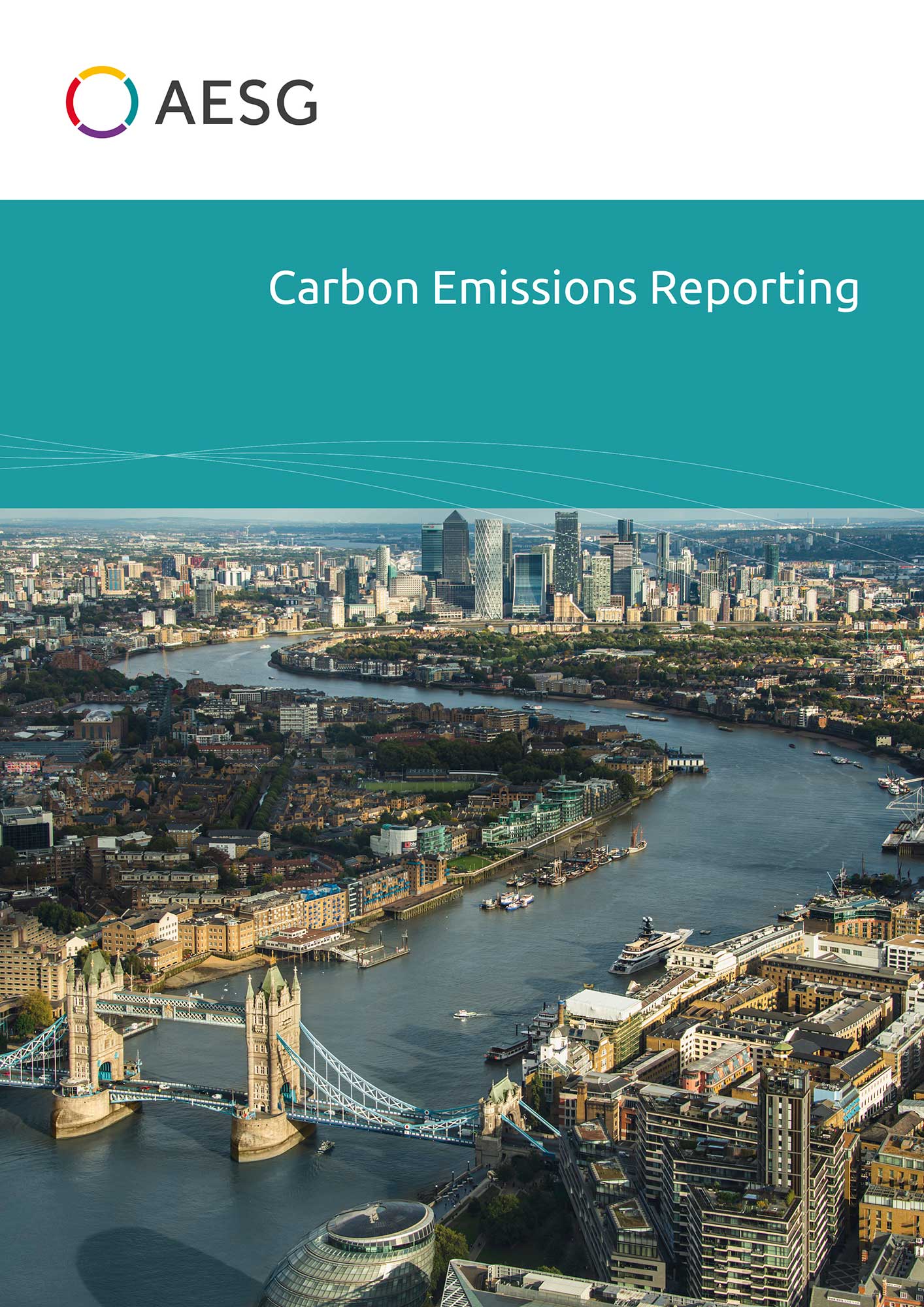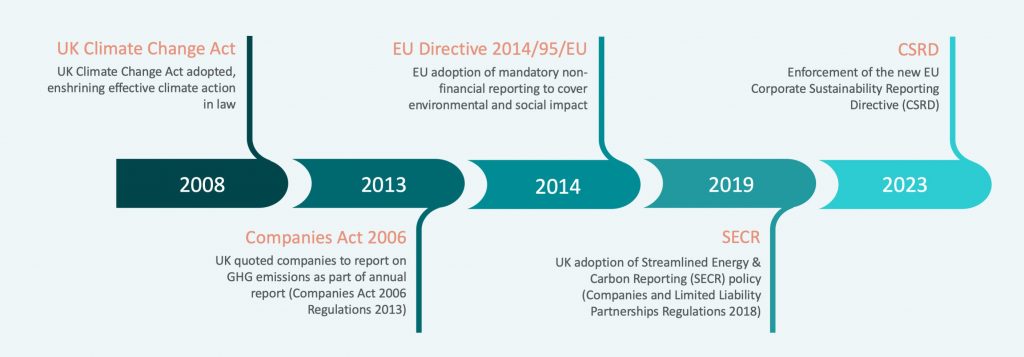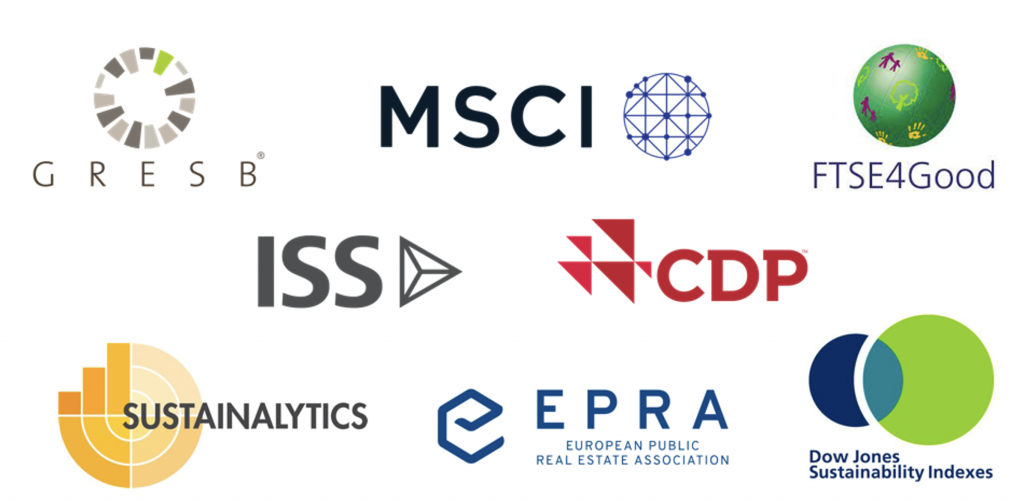

The carbon emissions reporting landscape has changed radically over the last decade, with the UK stepping up its regulatory efforts to align corporate activities with the national net zero carbon strategy.
Since the enforcement of the UK Climate Change Act in 2008, reporting on greenhouse gas (GHG) and in particular carbon emissions by the private sector has been mandated to varying degrees across the UK and Europe. The latest update of the UK regulations, adopting the Streamlined Energy & Carbon Reporting (SECR) policy, has extended the minimum reporting requirements of quoted companies as well as requiring additional reporting from large, unquoted companies. The EU has similarly enforced the Corporate Sustainability Reporting Directive as of January 2023, extending their reporting requirements to additional companies beyond their original 2014 directive.

*Quoted company defined in the SECR as a “company that is UK incorporated and whose equity share capital is listed on the Main Market of the London Stock Exchange UK or in an EEA State, or admitted to trading on the New York Stock Exchange or Nasdaq.”
In addition to regulatory requirements, carbon emissions reporting is a cornerstone of almost all ESG corporate benchmarks. There is a notable shift towards transparent reporting, utilising tangible data with standardised metrics to tackle issues relating to greenwashing.
While there are still challenges associated with the varying methodologies lacking a standardised approach, real estate sustainability benchmarks (including the following) aim to provide simplified ESG ratings.

To begin assessing and reporting on your corporate carbon emissions, the following steps should be taken:
AESG’s dedicated team of energy and climate change advisory experts support our clients in the establishment of carbon emissions baselines, carbon accounting, forecasting and reporting. We also have qualified auditors to provide third party verification and assurance services for completed carbon assessments. If you need support with your upcoming emissions calculations, reporting or third party verification then reach out via the below contacts and we will be happy to help.
How can AESG help?
AESG is a specialist consultancy, engineering and advisory firm with offices in London, Dubai. Riyadh and Singapore working on projects throughout Europe, Asia and Middle East. We pride ourselves as industry leaders in each of the services that we offer. We have one of the largest dedicated teams with decades of cumulative experience in sustainable design, fire and life safety, façade engineering, building commissioning and digital asset management, waste management, environmental consultancy, strategy and advisory, acoustics, cost management and carbon management.

Partner and Global Sustainability Director, AESG
Phillipa is AESG’s Partner and Global Director of Sustainability. Having worked on some of the most complex and prestigious sustainability projects in AESG’s portfolio, including the development and implementation of Dubai’s Demand Side Management programs and multiple pavilions at Dubai EXPO 2020, Phillipa has gained a broad and thorough understanding of the energy and sustainability sector, both locally and internationally, and is passionate about furthering the global Sustainable Development Goals. Phillipa leads all of AESG’s energy and sustainability related strategic advisory projects, including the development of government policies and programs as well as sustainable development guidelines for low-income housing.
In 2018 Phillipa was recognised for her performance by the AESG Sustainable Business Leadership Awards and was awarded “Sustainability Manager of the Year”. In 2019 Phillipa was awarded as ‘Highly Commended Engineer of the Year’ at the Construction Week Awards 2019.
For further information relating to specialist consultancy engineering services, feel free to contact us